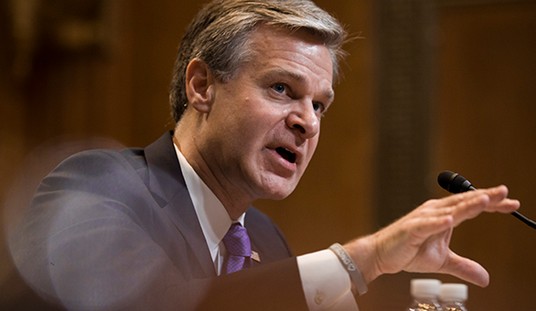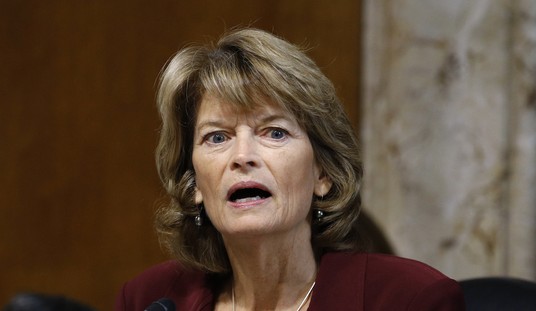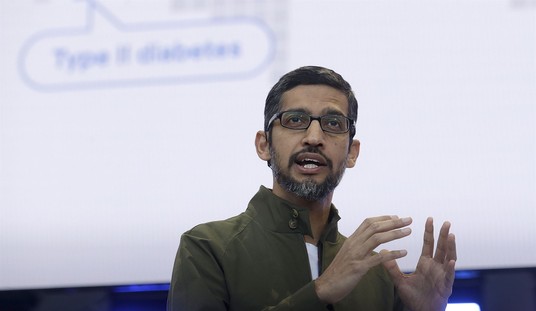Will this tide us over until the end of June? And will Congress have to do this all over again if not? The Senate passed a massive relief bill last night aimed at rescuing the economy from free-fall during the coronavirus pandemic, and did so on a 96-0 unanimous vote. But just how much relief does $2.2 trillion buy?
Three months, said Treasury Secretary Steve Mnuchin, although he hopes we don’t end up testing whether it’s sufficient for that much inactivity:
The package is intended as relief for an economy spiraling into recession or worse and a nation facing a grim toll from an infection that’s killed more than 21,000 people worldwide. Treasury Secretary Steven Mnuchin, asked how long the aid would keep the economy afloat, said: “We’ve anticipated three months. Hopefully, we won’t need this for three months.”
Underscoring the effort’s sheer magnitude, the bill finances a response with a price tag that equals half the size of the entire $4 trillion-plus annual federal budget. The $2.2 trillion estimate is the White House’s best guess.
The “best guess” includes some dicey incentives created by the final agreement in the Senate. The rush to extend full-salary unemployment benefits for four months resulted in language that covers voluntary resignations for the first time, and also in some limited circumstances incentivizes them by paying more than the employer did. That led a group of Senate Republicans to threaten to block the bill, but in the end they settled for a vote on an amendment to cap the benefits, which failed:
By the early afternoon, with the final text of the bill still taking shape after a bipartisan deal by Senate leaders and the Trump administration, a group of Republicans threatened to hold it up. They said the expanded unemployment benefits were overly generous and would encourage workers to get laid off — an objection that immediately triggered a counterthreat from Senator Bernie Sanders of Vermont, who promised to place his own hold on the bill over his concerns about “corporate welfare” if they did not drop theirs.
A vote to amend the bill to cap the unemployment benefits failed Wednesday night.
As Jazz noted, it passed unanimously, leaving Nancy Pelosi little room for opposition or obstruction. Donald Trump hailed the 96-0 passage and has pledged to sign it immediately when the House sends it over. Perhaps as soon as today, but likely by the end of tomorrow at the latest, the clock will start on Mnuchin’s three-month expiration date.
That’s a rather generous time period, at least relative to Trump’s public goal of getting back to normal by Easter. Perhaps more importantly, it gives governors some breathing room, both economically and politically, that the Easter target goal threatened to encroach. Here in Minnesota, Gov. Tim Walz just announced a “stay home” order similar to those in New York, Illinois, Michigan, Wisconsin, California, and a few other states. Those will likely last past Easter, perhaps significantly so until they get health-care resources to deal with an expected explosion in hospitalizations, and right now the projections on those resources show they won’t get significantly bolstered for a few weeks yet.
The Hill noted the coming clash with governors before the bill’s passage:
President Trump’s aggressive timeline for reopening the economy could set the White House on a collision course with governors and mayors who seem intent on maintaining social distancing policies beyond the president’s Easter target date if necessary.
Trump’s proposal on Tuesday to ease restrictions by mid-April came as a number of state and local governments have moved in the opposite direction, heeding the advice of public health officials to implement stay-at-home orders and close non-essential businesses to stem the rising number of coronavirus infections. …
In addition to resistance from public health officials, Trump’s aggressive timeline also faces practical obstacles. Some state and local governments have implemented far more stringent measures than the federal government’s voluntary guidelines, creating a fragmented patchwork of safeguards to limit person-to-permission transmission of the virus.
“The U.S. is not like China. We don’t have an all-powerful president,” said Lawrence Gostin, a professor of public health law at Georgetown University. “We share power between the federal government and the states.”
While the president has clear authority to rescind or alter federal health guidelines, legal experts say state and local officials are not required to follow them if their jurisdiction’s health situation warrants stricter measures.
All true, and as I noted yesterday, Trump is very aware of that limitation. By pushing an Easter goal for normalization, he shifted political responsibility for economic consequences to the governors who control those decisions, too. If Mnuchin’s correct about the time frame of this relief bill, that should just about cover the rapid production of health-care resources necessary to give these governors enough confidence to rescind those orders and get most people back to normal. That’s a fairly clear-eyed view of the purpose of flattening the curve in the first place, and perhaps a signal that the White House doesn’t plan to press that Easter goal too hard after all.








Join the conversation as a VIP Member